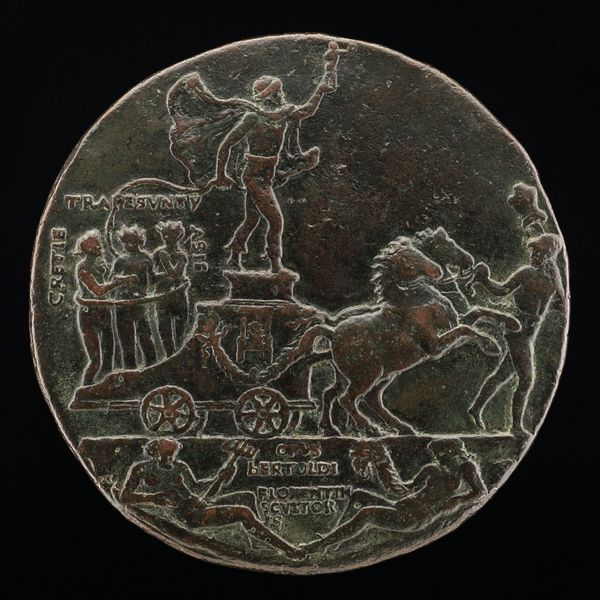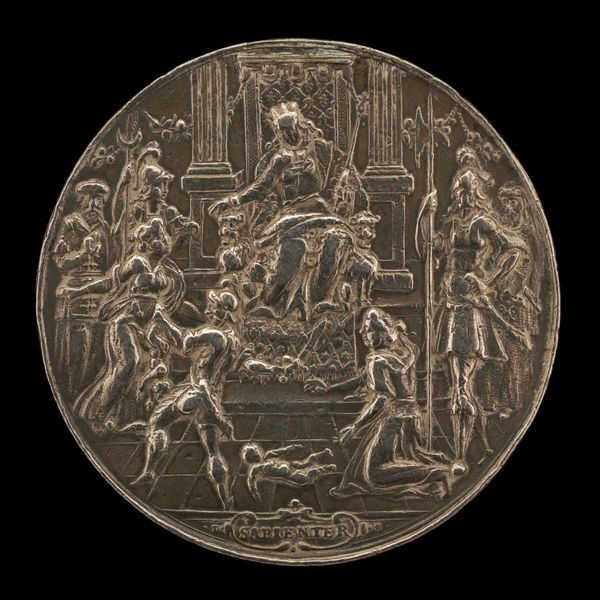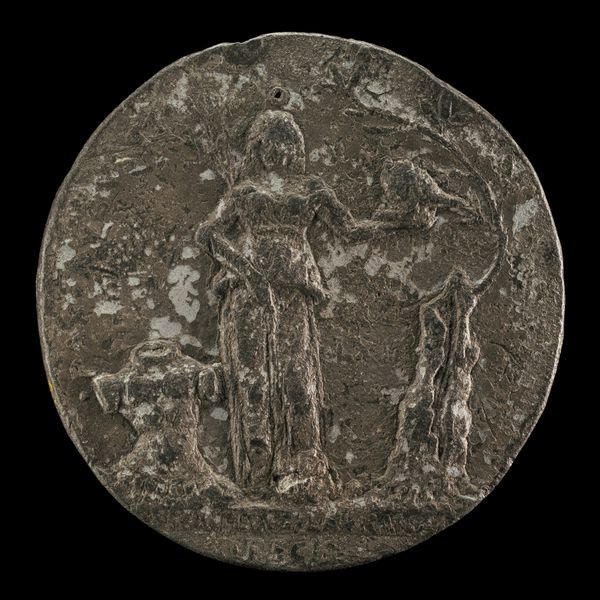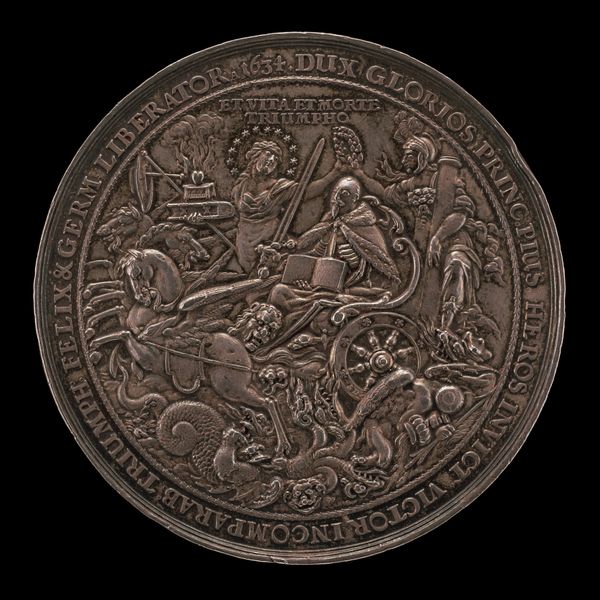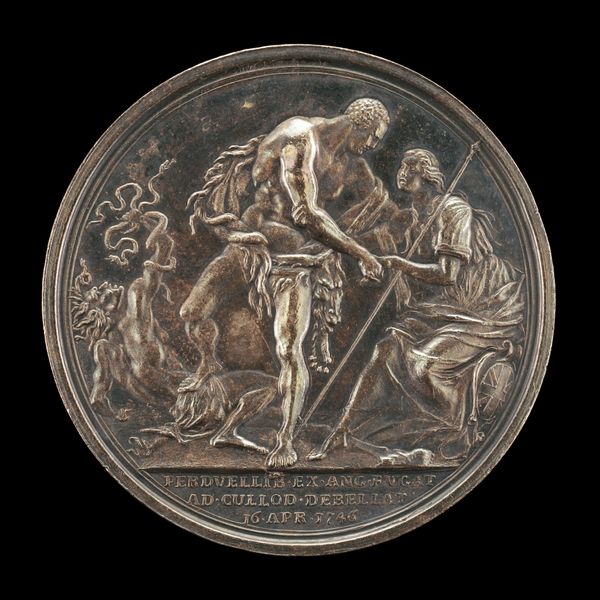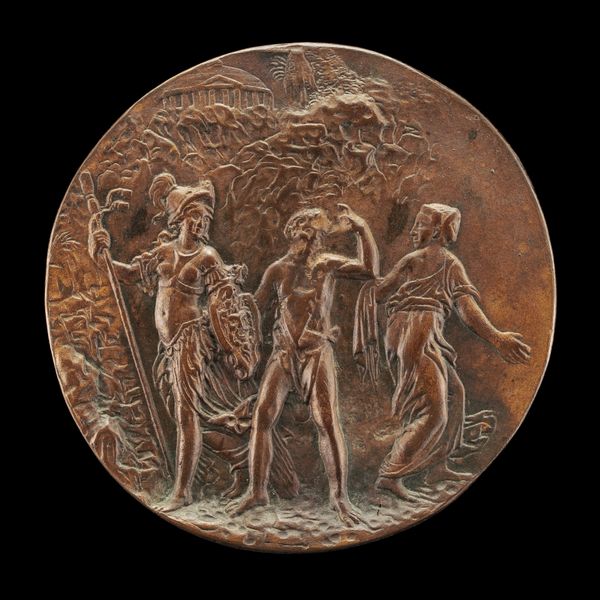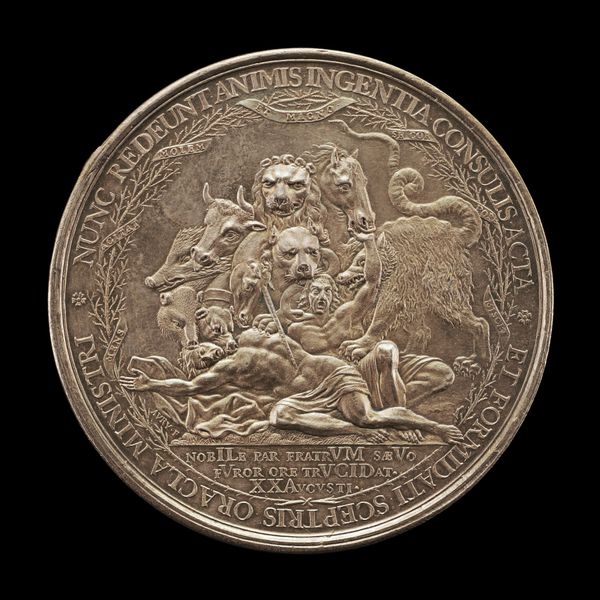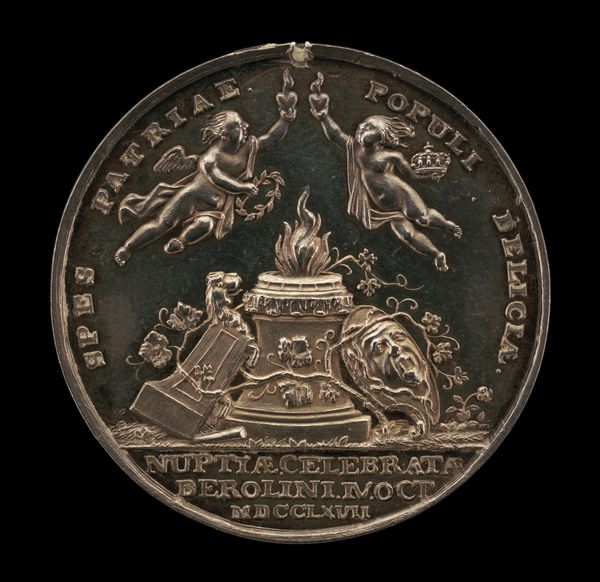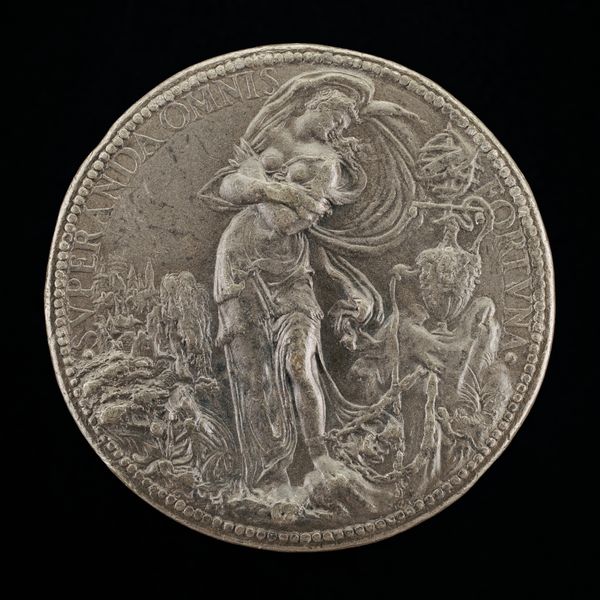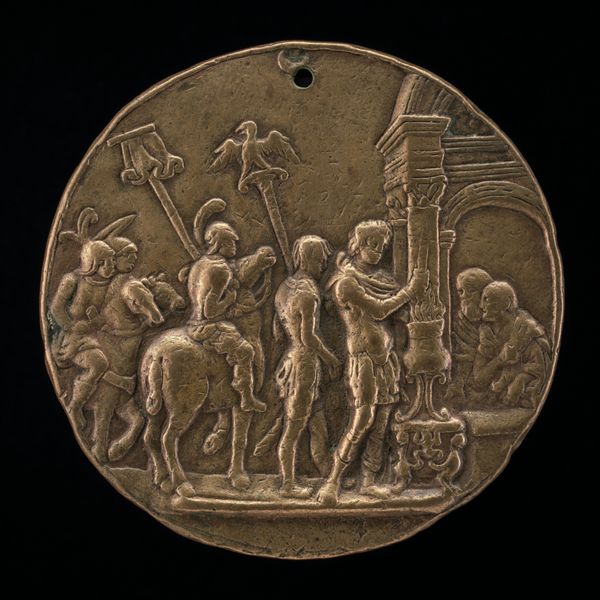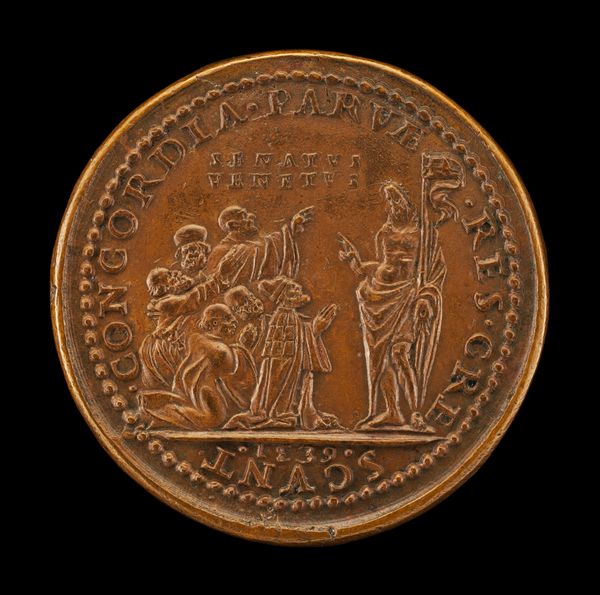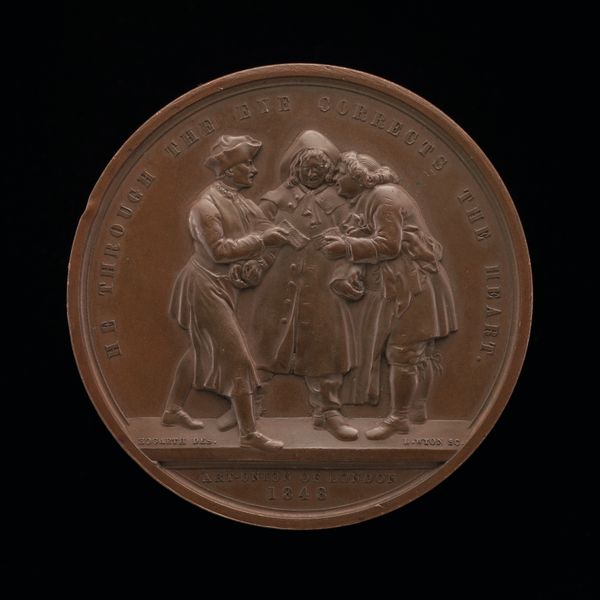![The King Being Crowned between Peace and Justice [reverse] by Nicolaus Seeländer](/_next/image?url=https%3A%2F%2Fd2w8kbdekdi1gv.cloudfront.net%2FeyJidWNrZXQiOiAiYXJ0ZXJhLWltYWdlcy1idWNrZXQiLCAia2V5IjogImFydHdvcmtzL2EzYTU1N2U2LWU1NTMtNDAyMy1iMWRjLWUyZGEyZWJjOTc1Mi9hM2E1NTdlNi1lNTUzLTQwMjMtYjFkYy1lMmRhMmViYzk3NTJfZnVsbC5qcGciLCAiZWRpdHMiOiB7InJlc2l6ZSI6IHsid2lkdGgiOiAxOTIwLCAiaGVpZ2h0IjogMTkyMCwgImZpdCI6ICJpbnNpZGUifX19&w=3840&q=75)
The King Being Crowned between Peace and Justice [reverse] 1714
0:00
0:00
metal, relief, sculpture
#
portrait
#
allegory
#
baroque
#
metal
#
sculpture
#
relief
#
figuration
#
classicism
#
sculpture
#
history-painting
#
miniature
Dimensions: overall (diameter): 11.5 cm (4 1/2 in.) axis: 12:00
Copyright: National Gallery of Art: CC0 1.0
Editor: Here we have Nicolaus Seeländer's metal relief, "The King Being Crowned between Peace and Justice," created in 1714. The imagery feels very classical. What’s particularly striking to me is the meticulous detail rendered on such a small scale. How do you approach interpreting a piece like this? Curator: As a materialist, I immediately focus on the “how” and “why” of its production. The use of metal, likely pewter or silver, wasn't merely aesthetic. It speaks to the desire to immortalize power through a durable and valuable material. This wasn’t just art; it was a commodity meant to circulate, demonstrating the reach and wealth of the monarchy. Do you notice anything about how the figures themselves are posed in relation to the central figure of the King? Editor: Yes, Peace and Justice flank the King, seemingly bestowing legitimacy upon his rule. Their positioning reinforces the King’s authority and divine right. It’s all very strategic. Curator: Precisely! The means of production also dictated the style. Relief work necessitates careful labor, implying skill and investment, almost as if the labor embedded within reinforces a notion of inherent value in the King it represents. Consider its accessibility too. Replicating this image through striking methods ensured broader distribution than, say, a unique painted portrait. What implications might that have? Editor: That suggests the piece wasn't just for the elite, it served as propaganda, shaping public perception. And the deliberate classical style links the monarchy to the grandeur of previous empires. It elevates the ruler. Curator: Indeed! Each strike would then represent countless resources. Understanding this helps to remove notions of art that exists independent from socio-economic pressures, don’t you think? Editor: Absolutely. I never really considered the economic aspects. It has really expanded my thinking about the art object's purpose! Curator: And hopefully it's revealed how materials, labour and capital function within seemingly straightforward pieces of royalist art.
Comments
No comments
Be the first to comment and join the conversation on the ultimate creative platform.
